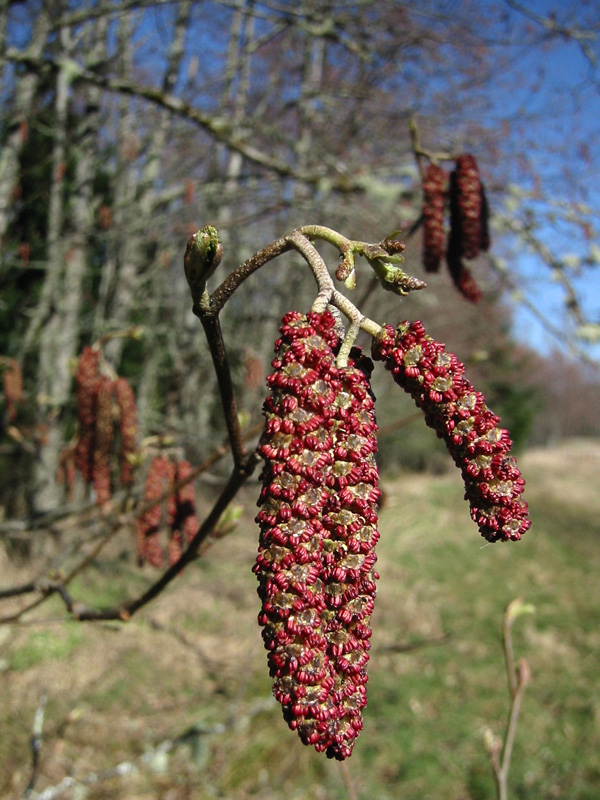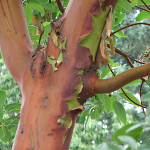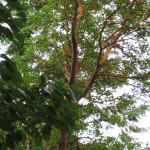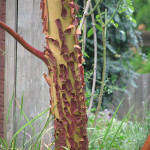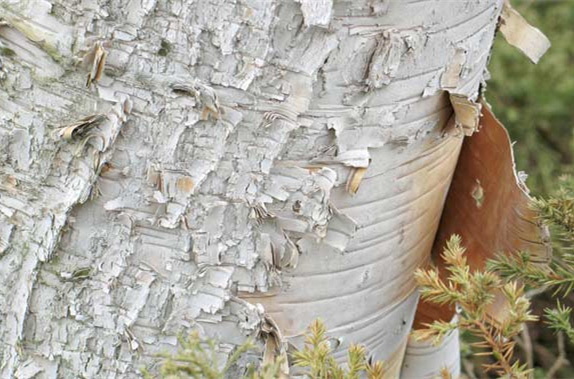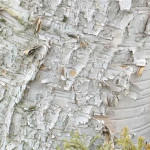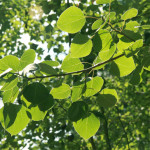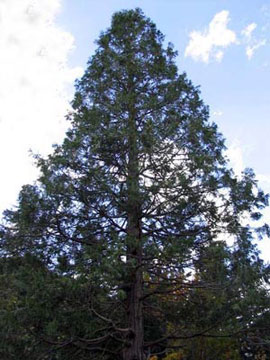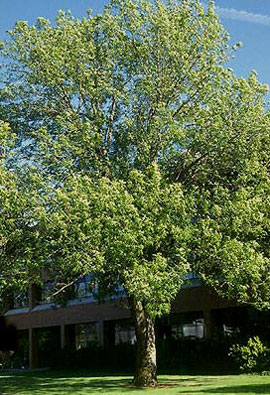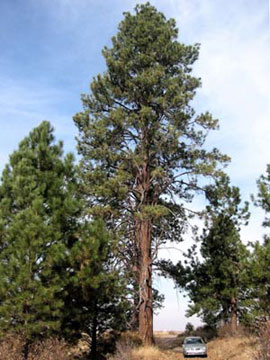Giant sequoias (Sequoiadendron giganteum) are the world’s largest trees by volume. In the wild, mature trees can reach up to 350 feet tall with trunks 20′-40′ in diameter, supported by broad, shallow roots spreading out 150′ in all directions. These trees are medium to fast growers, reaching heights of 30 feet at 10 years old, and 100-150 feet in 50 years. Trunks can be 1.5′ wide after 10 years and 8′ in diameter after 50 years–and given that these trees can live up to 3,000 years old, they’re just getting started!
Giant sequoias do best in sunny, protected areas with moist, fertile, well-drained sandy loam soils. Though older trees have some drought resilience, young trees need moist roots all year. They will sometimes discolor temporarily in the winter after a hard cold snap, but will return to green with warmth and sufficient water.
These impressive trees provide many benefits. They shade urban landscapes, create windbreaks in open areas, and provide shelter for many birds and small mammals.
Like their cousins the coastal redwoods, plant these enormous trees far away from paved areas, buildings, and power lines. With enough room to grow, giant sequoias are hardy, magnificent plants that bring grace and beauty to any large landscape.
Light Requirements: Full sun
Water Requirements: Moist
Ease of Growing: Easy to grow
Growth Rate: Fast
Spreads: No
Wildlife Support: Birds or Mammals
Mature Height: 200 feet (in urban areas)
Mature Width: 40-65 feet

